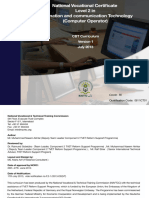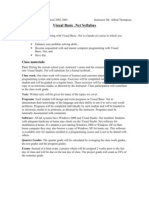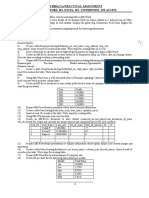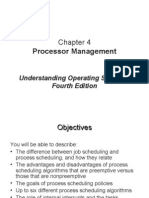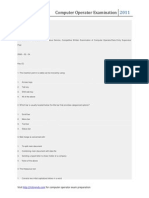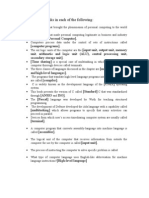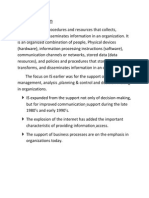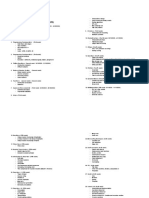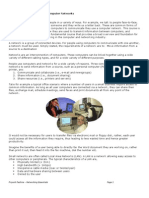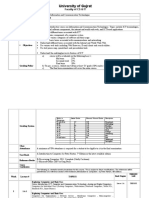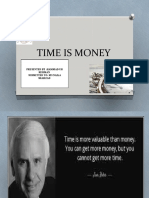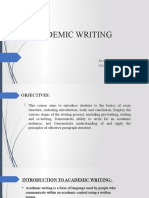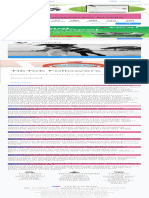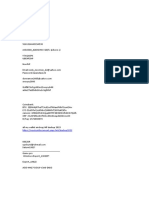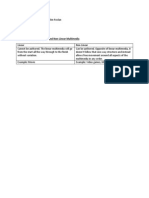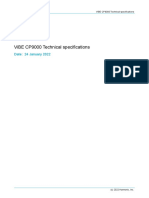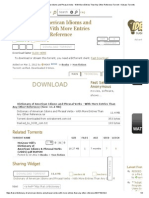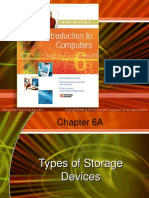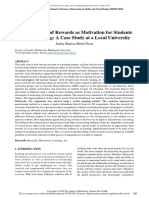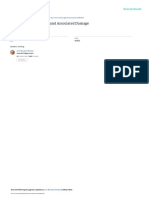DHA Suffa University Karachi
MANAGEMENT SCIENCES DEPARTMENT
Course Name: Introduction to Computers
Course Syllabus for: BBA-1
Course Name Introduction to Computers
Course Code MS 1301
Class BBA 1 Spring 2021
Instructor Ms. Naila Shahzada
Email n.shahzada@dsu.edu.pk
1. Course Description:
This course introduces computer concepts, including fundamental functions and operations of the computer.
Topics include identification of hardware components, basic computer operations, security issues, and usage
of software applications. Coursework also includes activities that explore social and ethical issues related to
computers. Upon completion, students should be able to demonstrate an understanding of the role, function
of computers, and use the computer to solve problems.
2. Course Objectives:
Explain how computers can affect an individual, a business and any organization to gain efficiency and
productivity;
Analyze the different components of a computer and their workability.
Analyze different computer applications and platforms which can increase the potentials of a business.
How to increase the security of a computer environment.
3. Learning Outcomes:
LO1: Identify different types of computers & know their importance in today’s society.
LO2: Learn about different input, output, & data storage devices. In addition, how computer process
data and how the CPU works.
LO3: Learn how different applications can increase productivity in an organization.
LO4: Learn about data threats, vulnerability and counter measure in the context of computer security.
4. Reference Books:
1. Peter Norton “Introduction to Computers”, McGraw-Hill. 7th Edition
Page | 1
� 2. Brian Williams and Stacey Sawyer, “Using Information Technology”, McGraw-Hill, ISBN:
0072260718, (Latest Edition).
3. Patt and Patel, "Introduction to Computing Systems from Bits and Gates to C and Beyond", Mc-
GrawHill
4. Lab handouts – miscellaneous
5. Topics / Chapters:
Introduction to Computers
History of computers, the information Processing Cycle,
Social impact of computer age, computers in office, industry and education.
Input & Output Devices
Keyboard, mouse, video, Sound, Printing etc.
Transforming data into information
Modern CPUs and their processing
Types of Storage Devices
Optimizing Disk performance
System Software & Communications
Operating System Basics, PC Network Operating Systems & Internet
Productivity Software
Word editor, Spreadsheets, Graphics and multimedia, Database Management
Computer Security
6. Weekly Course Outline:
Session Topics Lab Work
s
1. Introduction to Computers, History of Computers, MS Word
the information Processing Cycle, social impact
of computer age, computers in office, industry
and education.
2. Using the Input and Output Devices - keyboard, MS Word
mouse, video, Sound, Printing etc.
3. Transforming data into information, Modern MS PowerPoint
CPUs and their processing.
4. Student Article / Topic Presentations Advance Topics in MS Word /
PowerPoint
5. Types of Storage Devices, Optimizing Disk MS Excel
performance.
6. Operating System Basics, PC and Network Windows Hands On
Page | 2
� Operating Systems
7. Student Article / Topic Presentations MS Excel
8. Network Basics, Types of Networks, Data Network Hands On / MS Excel
Communications
9. Internet and Worldwide Web, Doing business in Internet Lab Exercise
the online world
10. Productivity Software, Graphics and multimedia Canva
11. Student Article / Topic Presentations HTML
12. Database Management MS Access
13. Need for security measures, and protecting your Revision of different Topics
privacy and data
14 Student Final Presentations
Final Examination
7. Expected Class Conduct:
Students are supposed to be regular and punctual in the class
Once the Attendance register / LMS is closed then no student will be given any attendance.
Students would not be allowed to go outside during the class.
No cell phone will be allowed during the class.
Marks will be deducted if assignments are submitted late.
8. Teaching and Learning Methodology:
Formal classroom lectures
Class discussion
Case Studies
Quizzes &Assignments
Presentations
9. Marks Distribution
Quizzes: 20%
Research presentation: 15%
Assignment: 20%
Final Exam: 40%
Class Participation: 5%
100%
Page | 3








